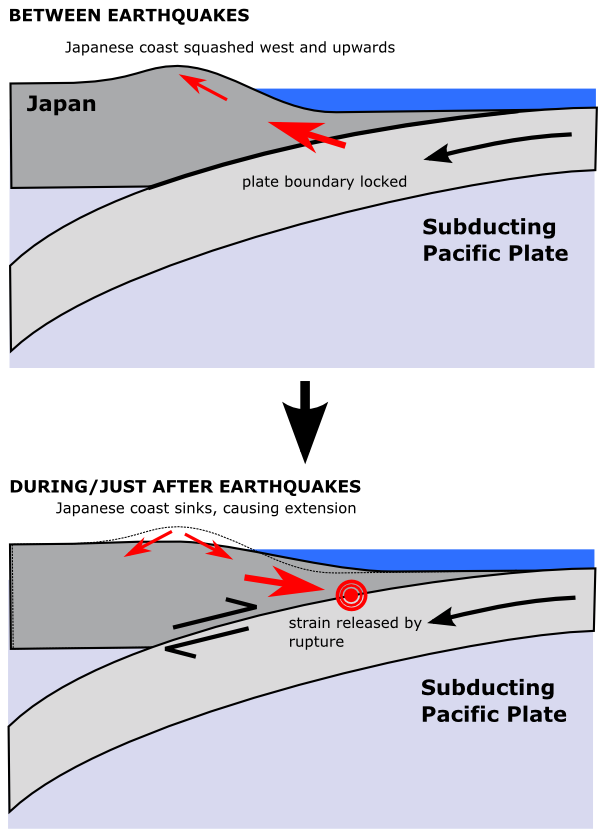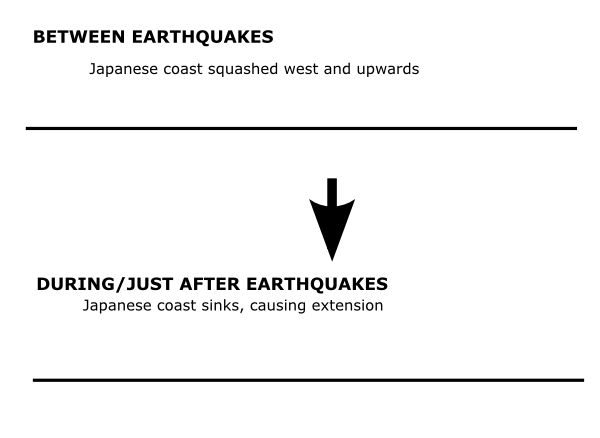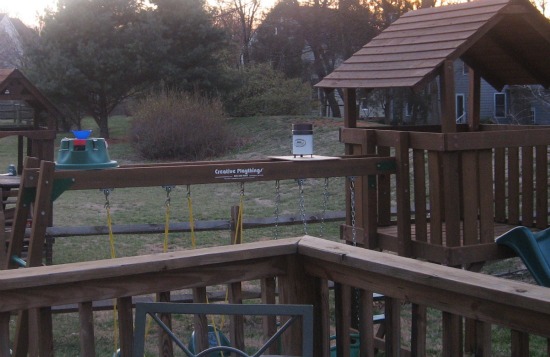![]() A few weeks ago, I was asked to answer some questions for a career profile section of a website aimed at students looking at college degree options. The website creators wanted to use me as their profile of a hydrologist, maybe because hydrology has been dubbed one of the “50 best careers for 2011” and “should have strong growth in the next decade.” As US News reported in December, “There were 8,100 hydrologist jobs in 2008, and the Labor Department projects that employment will grow more than 18 percent by 2018.”
A few weeks ago, I was asked to answer some questions for a career profile section of a website aimed at students looking at college degree options. The website creators wanted to use me as their profile of a hydrologist, maybe because hydrology has been dubbed one of the “50 best careers for 2011” and “should have strong growth in the next decade.” As US News reported in December, “There were 8,100 hydrologist jobs in 2008, and the Labor Department projects that employment will grow more than 18 percent by 2018.”
I’ve included below my answers to the generic career profile questions I was asked, but I was unable to completely disentangle my scientific profession as a hydrologist from my career as a university professor. Hydrologists working in industry or government would have somewhat different takes on day-to-day work life than I do. Nonetheless, I hope my answers might be useful to students trying to decide “what to be when I grow up.”
What do you do, and why did you decide to pursue this career field?
I am an assistant professor in the Department of Geography and Earth Sciences at the University of North Carolina at Charlotte. My research and teaching focus on water, so I am a hydrologist.
The sorts of research questions that fascinate me are: “What controls whether a rain drop ends up running over or through the soil into a stream channel within hours to weeks versus sinking down and becoming groundwater that spends years to centuries underground before maybe emerging in that same stream at a spring? How do the topography and geology of a landscape affect the sensitivity of streams and groundwater to floods, droughts, and climate change? How do human activities like urban development, stormwater management, and stream restoration affect floods, low flows, groundwater recharge, and water quality?”
My hometown is on the Mississippi River and its identity and economy is strongly tied to the river. In 1993, while in high school, I got to see the incredible dynamism of the river in action during a record-breaking flood. I was hooked, and decided to study geology in college. My first experiences with scientific research thrilled me – being the person to collect and analyze the data and answer a question that had never before been answered. In order to choose my own research projects in hydrology, I knew I needed a Ph.D.
What type of preparation did you do to get into this field, such as educational experience and work experience?
I have a BA degree in Earth and Planetary Science from The Johns Hopkins University, a MS degree in Water Resources Science from the University of Minnesota, and a PhD in Geology from Oregon State University. After my PhD, I spent time as a post-doctoral researcher before getting my job at UNC Charlotte.
All through school, I was involved with research. As an undergraduate, I did a summer “Research Experience for Undergraduates” at the Smithsonian and a senior thesis on soil water isotopes. Graduate degrees in the sciences are heavily research oriented, and both my MS and PhD projects involved lots of work in the field – wading in streams to measure the amount of flow and collecting stream water, snow, and rock samples. They also involved a lot of time in front of the computer trying to make sense of all of the data I had collected.
While I was in school, I had a couple of work experiences related to water policy and management, since those are also interests of mine. As an undergraduate I did an internship with an environmental organization in Washington, DC, and as a MS student I worked for a county planning department and for the University of Minnesota’s Water Resources Center. These sorts of experiences aren’t required for a hydrology professor, but, for me, they provide valuable context for my scientific research.
If your education was directly related to your career, what types of classes and projects did you have to do?
There are many different undergraduate majors possible for people interested in working with water. Among the most common are civil and environmental engineering, geology or earth science, and geography. There are only a handful of universities that offer undergraduate degrees in hydrology or watershed science, though graduate programs specifically related to interdisciplinary training in water resources science are increasing. As an undergraduate, I recommend getting a strong base in the fundamental courses and concepts in your major, and then adding water-related classes as you have time. If you don’t get a deep enough base in a traditional discipline, you may find that potential employers or graduate advisors don’t understand what skills and knowledge you have.
Regardless of your major, if you are interested in hydrology, take as much math, chemistry, and physics as you possibly can during your high school and undergraduate years. Those classes will give you critical background for your hydrology classes. By the time I was done with my PhD, I’d taken the equivalent of six semesters of math (calculus, differential equations, and beyond), two semesters of statistics, two semesters of physics, and three semesters of chemistry. I sometimes wish I’d taken more, and I definitely wish I’d taken a computer programming class. Another thing I I recommend for almost anyone interested in hydrology is a class (or more than one) in Geographic Information Systems (GIS). GIS is a powerful tool for anyone interested in understanding how natural resources are distributed across a landscape, and some employers may expect at least a little familiarity with GIS.
If you decide to go to graduate school, you may find the array of classes that you can choose from to be dizzying. Work carefully with your graduate advisor and your committee to select a set of classes that will serve your graduate research project *and* your future career plans well. There’s no one standard set of classes for people seeking graduate degrees in hydrology, but I took classes like “Forest and Wetland Hydrology”, “Hillslope Hydrology”, “Groundwater Hydraulics,” “Sediment Transport,” and “The Role of Fluids in Geological Processes.” I also took classes that wouldn’t appear to have anything to do with water, things like “Volcanology” and “Glacial Geology”. Those classes were helpful as I continued to increase my depth of knowledge in geology, and because they provide a supporting framework for understanding problems in hydrology. However, the most important part of graduate school is learning to do scientific research and to communicate it well. You’ll learn that outside the classroom through working with your advisor, your committee members and collaborators, and your fellow graduate students.
How did your education help you in your career?
My education through a Ph.D. was absolutely essential to enable me to become a university professor in hydrology. While there are some limited teaching-intensive positions that might not require a completed Ph.D., if your goal is to teach and do research at the university level, you must complete a Ph.D.
What was your career path like in this field? For example, did you begin in one position and advance through others to reach where you are now?
I am in my first position as a university professor. Before getting my job at UNC Charlotte, I had gained some valuable teaching experience as an instructor for an Oregon State University summer session class, and I spent about a year as a post-doctoral researcher expanding my research skills, but this position is the first one to call on all aspects of my training – and then some.
What types of skills is someone required to have to work in your position?
My job requires me to have both deep and broad knowledge of hydrology and related fields, but there are many other skills that are necessary to be a successful hydrologist and university professor. In no particular order, someone like me needs skills in:
- Written communication – I need to be able to communicate to both technical and non-technical audiences. The written form is the primary way I share my research results with other scientists and secure funding to continue doing my work. I spend a lot of time reading and commenting on student writing, and I also have to write things like letters of recommendation.
- Oral communication – My job involves speaking to large groups, creating an interactive classroom environment, and communicating one-on-one or in small groups with students and colleagues. Teaching is about 50% of my job and being a communicator and a good listener is vital to being a good teacher.
- Quantitative, statistical, and computer usage– I spend lots of time in front of a computer analyzing data and doing spatial analysis in GIS. Of course, computing grades also requires low level quantitative skills. 😉
- Creativity – As a PhD-level scientist, I get to pick the research projects on which I want to work. That means I get to dream them up, and then figure out how to make them feasible.
- Outdoors – When I get out in the field, skills like map reading, water safety, wilderness survival, and being able to “read” the landscape and weather are essential to keeping my students and I safe and getting the data we want to collect. For some hydrologists, the necessary outdoor skills might include whitewater kayaking or rafting or operating motorboats or snowmobiles.
- Lab skills – Although most of my data comes from the field, I also do some more traditional laboratory analyses. That means that I need to do things like pipette, clean glassware, and properly store chemicals.
- Construction – This might sound odd, but I’ve learned to be handy with PVC, wood, metal cable and various other construction materials. My students and I are constantly designing and building our own apparatuses to measure things like peak water height and to safely secure them at our field sites.
- Personnel and budget management – In some ways, being a researcher is a lot like being a small business owner. It is important for me to be a good mentor to my students, so they learn how to do research, write a scientific paper, and get their degrees. For each research project with which I’m involved, I have to carefully manage the budget so there’s enough money to do the work to completion.
- Time management – There is absolutely never, ever enough time in the day to get through all of the things that I need to do for my job. Figuring out how to prioritize, work efficiently, and just let go of the things that can’t be done is probably one of the hardest challenges for a new assistant professor. Four years in, the time crunch hasn’t gone away, all I can say is that I’ve gotten inured to it.
What do you do on a typical work day?
Over the course of a typical work week, I spend 4-12 hours in the classroom teaching, 12-30 hours preparing for class and grading papers, 3-8 hours meeting with undergraduate and graduate students about classes or research, a couple of hours in faculty or committee meetings or meetings with research collaborators, several hours dealing with email accumulation, and an hour or two doing what is called “service”, which includes things like peer-reviewing papers or grant proposals and evaluating scholarship applications.
And all of that is before I get to my own research time for generating and analyzing data and writing papers and grant proposals. If I’m really lucky I get to go in the field by myself, with students, or with collaborators. Or I sneak into the lab and run some samples. I try to carve out at least a full workday per week for research time, and I wish I could do more. Summers and holidays give me a bit more room to spend time on research, but in order to keep research going smoothly, it’s imperative that I make time for it even during the busiest teaching periods.
You can probably see that it is very easy to work far more than 40 hours per week as an assistant professor. That’s why I listed time management skills as a requirement for my job.
Do you plan to advance to another position within your career field? If so, to what position and why?
The general progression for a university scientist is to spend about six years as assistant professor, before applying for tenure and a promotion. The next stage is associate professor, and after that you can go onto become a full professor. If you have an interest in and a knack for management, you can try to become the head of a department or even a dean.
As for me, for now, I’m focused on doing good quality research and teaching to prepare myself to apply for tenure in less than two years. I’m trying to mix writing up completed projects, with keeping on-going projects progressing steadily, and writing grants to support new research. That’s not going to change, even with tenure.
What type of person do you think is best suited for a job in your field?
In order to be successful in my career, you have to be highly self-motivated. Love of the outdoors, being thrilled by discovery and data, a passion for teaching, a fascination for your subject…all of these are necessary things too. But they are not sufficient unless you are motivated enough to keep working hard in the face of failure (experiments gone wrong or equipment breakage), rejection (lack of funding for a grant proposal or negative reviews on a paper), long hours (there’s lots of grading), bad weather (working in 100 degree heat or freezing weather), and no one looking over your shoulder (you are your own boss). What keeps me motivated in the face of all that? That’s where the love of the outdoors, the thrill of discovery, a passion for teaching, and a fascination for water come in to play. I’ve got the best job in the world. For me.
Do you have any advice for those who are looking to launch a career in your field?
To summarize: Pick something that fascinates you. Get involved with research projects early and often. Take lots of math. Learn your field deeply and broadly both in the classroom and outside it. Don’t neglect to develop important skills just because they are not taught in formal classes. Learn to manage your time well. Have a passion for what you do and let that be your motivation. And make sure to get outdoors and be around water as often as you can, because that’s what reminds you of the fascination and passion that motivated this career choice in the first place.











Nice plan for content warnings on Mastodon and the Fediverse. Now you need a Mastodon/Fediverse button on this blog.